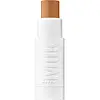What's inside
What's inside
 Key Ingredients
Key Ingredients

 Benefits
Benefits

 Concerns
Concerns

 Ingredients Side-by-side
Ingredients Side-by-side

Ethylhexyl Palmitate
EmollientBis-Diglyceryl Polyacyladipate-2
EmollientOctyldodecanol
EmollientPolyethylene
AbrasiveSilica
AbrasiveMicrocrystalline Wax
Emulsion StabilisingPentaerythrityl Hydrogenated Rosinate
Mica
Cosmetic ColorantPolyglyceryl-3 Diisostearate
EmulsifyingCopernicia Cerifera Wax
Euphorbia Cerifera Wax
Lavandula Angustifolia Oil
MaskingHelianthus Annuus Seed Oil
EmollientTrifolium Pratense Flower Extract
AstringentAlthaea Officinalis Root Extract
Skin ConditioningChamomilla Recutita Flower Extract
MaskingNymphaea Caerulea Flower Extract
Skin ConditioningTocopheryl Acetate
AntioxidantTocopherol
AntioxidantAscorbyl Palmitate
AntioxidantHydrogenated Polyisobutene
EmollientDisteardimonium Hectorite
StabilisingOctyldodecyl Neopentanoate
EmollientIsononyl Isononanoate
EmollientPentaerythrityl Tetra-Di-T-Butyl Hydroxyhydrocinnamate
AntioxidantButylene Glycol
HumectantWater
Skin ConditioningHdi/Trimethylol Hexyllactone Crosspolymer
Isopentyldiol
HumectantPropylene Carbonate
SolventPhenoxyethanol
PreservativeLinalool
PerfumingCI 77891
Cosmetic ColorantIron Oxides
Ethylhexyl Palmitate, Bis-Diglyceryl Polyacyladipate-2, Octyldodecanol, Polyethylene, Silica, Microcrystalline Wax, Pentaerythrityl Hydrogenated Rosinate, Mica, Polyglyceryl-3 Diisostearate, Copernicia Cerifera Wax, Euphorbia Cerifera Wax, Lavandula Angustifolia Oil, Helianthus Annuus Seed Oil, Trifolium Pratense Flower Extract, Althaea Officinalis Root Extract, Chamomilla Recutita Flower Extract, Nymphaea Caerulea Flower Extract, Tocopheryl Acetate, Tocopherol, Ascorbyl Palmitate, Hydrogenated Polyisobutene, Disteardimonium Hectorite, Octyldodecyl Neopentanoate, Isononyl Isononanoate, Pentaerythrityl Tetra-Di-T-Butyl Hydroxyhydrocinnamate, Butylene Glycol, Water, Hdi/Trimethylol Hexyllactone Crosspolymer, Isopentyldiol, Propylene Carbonate, Phenoxyethanol, Linalool, CI 77891, Iron Oxides
Glyceryl Triacetyl Ricinoleate
EmollientOctyldodecanol
EmollientBis-Diglyceryl Polyacyladipate-2
EmollientPolyethylene
AbrasiveKaolin
AbrasiveOzokerite
Emulsion StabilisingCalcium Aluminum Borosilicate
CI 77120
Cosmetic ColorantPolygonum Cuspidatum Root Extract
AntioxidantMorinda Citrifolia Fruit Extract
Skin ConditioningCaffeine
Skin ConditioningBisabolol
MaskingStearyl Glycyrrhetinate
Skin ConditioningTocopheryl Acetate
AntioxidantButylene Glycol
HumectantPentaerythrityl Tetra-Di-T-Butyl Hydroxyhydrocinnamate
AntioxidantCI 77891
Cosmetic ColorantIron Oxides
Mica
Cosmetic ColorantGlyceryl Triacetyl Ricinoleate, Octyldodecanol, Bis-Diglyceryl Polyacyladipate-2, Polyethylene, Kaolin, Ozokerite, Calcium Aluminum Borosilicate, CI 77120, Polygonum Cuspidatum Root Extract, Morinda Citrifolia Fruit Extract, Caffeine, Bisabolol, Stearyl Glycyrrhetinate, Tocopheryl Acetate, Butylene Glycol, Pentaerythrityl Tetra-Di-T-Butyl Hydroxyhydrocinnamate, CI 77891, Iron Oxides, Mica
Ingredients Explained
These ingredients are found in both products.
Ingredients higher up in an ingredient list are typically present in a larger amount.
This ingredient is lipid-based synthetic skin-conditioning agent derived from adipic acid and a mixture of fatty acids. It is often called a lanolin substitute.
As an emollient, it helps soften and hydrate the skin. Emollients create a barrier on the skin to trap moisture in.
Due to its fatty acid base, it may not be Malassezia folliculitis safe.
Learn more about Bis-Diglyceryl Polyacyladipate-2Butylene Glycol (or BG) is used within cosmetic products for a few different reasons:
Overall, Butylene Glycol is a safe and well-rounded ingredient that works well with other ingredients.
Though this ingredient works well with most skin types, some people with sensitive skin may experience a reaction such as allergic rashes, closed comedones, or itchiness.
Learn more about Butylene GlycolCi 77891 is a white pigment from Titanium dioxide. It is naturally found in minerals such as rutile and ilmenite.
It's main function is to add a white color to cosmetics. It can also be mixed with other colors to create different shades.
Ci 77891 is commonly found in sunscreens due to its ability to block UV rays.
Learn more about CI 77891Mica is a naturally occurring mineral used to add shimmer and color in cosmetics. It can also help improve the texture of a product or give it an opaque, white/silver color.
Serecite is the name for very fine but ragged grains of mica.
This ingredient is often coated with metal oxides like titanium dioxide. Trace amounts of heavy metals may be found in mica, but these metals are not harmful in our personal products.
Mica has been used since prehistoric times throughout the world. Ancient Egyptian, Indian, Greek, Roman, Aztec, and Chinese civilizations have used mica.
Learn more about MicaOctyldodecanol is a fatty alcohol. It is primarily used to enhance the texture of products.
As an emulsifier, Octyldodecanol helps prevent the oils and waters from separating. It also prevents ingredients from creating foam when shaken.
Octyldodecanol is created by reducing fatty acid to an alcohol.
Due to its high molecular weight, it does not get absorbed into the skin.
Learn more about OctyldodecanolPentaerythrityl Tetra-Di-T-Butyl Hydroxyhydrocinnamate (long name, huh?) is a synthetic antioxidant.
It is used to help stabilize other antioxidants or prevent the color from changing in a product.
As an antioxidant, it helps fight free-radical molecules. Free-radical molecules are capable of damaging our cells and other genetic material. Thus, antioxidants may reduce the signs of aging.
This ingredient is oil-soluble.
Learn more about Pentaerythrityl Tetra-Di-T-Butyl HydroxyhydrocinnamatePolyethylene is a synthetic ingredient that helps the skin retain moisture. It is a polymer.
It is also typically used within product formulations to help bind solid ingredients together and thicken oil-based ingredients. When added to balms and emulsions, it helps increase the melting point temperature.
Tocopheryl Acetate is AKA Vitamin E. It is an antioxidant and protects your skin from free radicals. Free radicals damage the skin by breaking down collagen.
One study found using Tocopheryl Acetate with Vitamin C decreased the number of sunburned cells.
Tocopheryl Acetate is commonly found in both skincare and dietary supplements.
Learn more about Tocopheryl AcetateThis ingredient is a combination of red, black, and yellow iron oxide pigments. This combination of colors is usually found in foundation, because it results in a "skin" color.